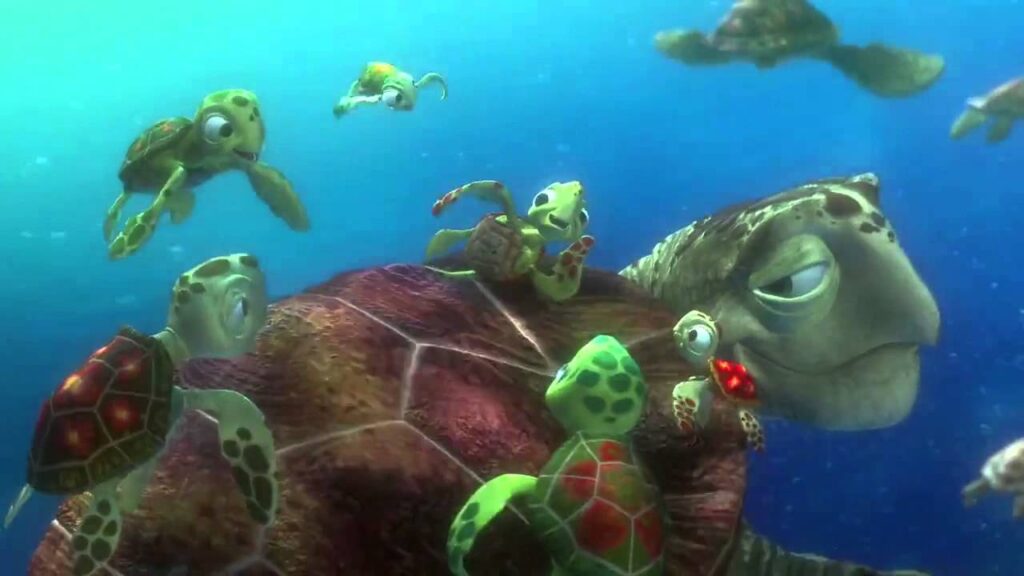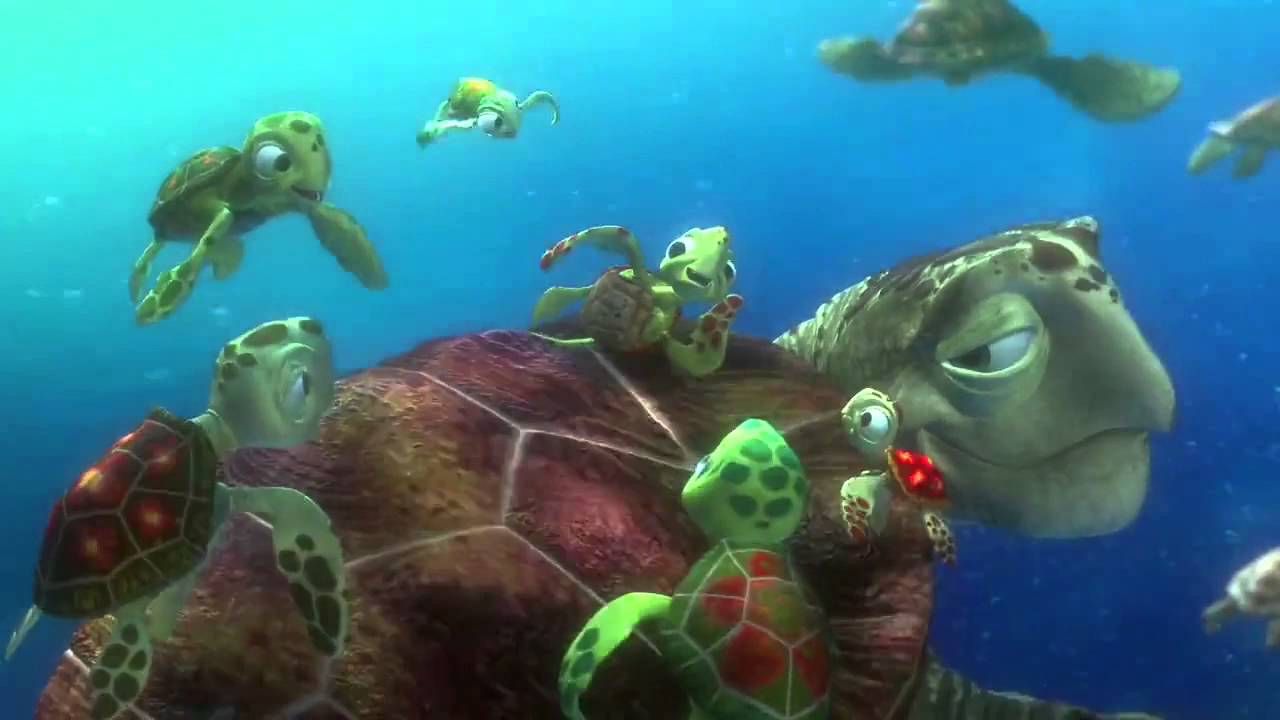
The Real-Life Inspiration Behind Crush: Exploring the World of Turtles Finding Nemo
Pixar’s *Finding Nemo* captivated audiences worldwide with its vibrant animation and heartwarming story. One of the most beloved characters, Crush, the laid-back sea turtle, has sparked curiosity about the real-life turtles that inspired him. This article delves into the world of sea turtles, exploring their characteristics, behaviors, and the crucial role they play in our oceans, drawing parallels to the iconic character from *Finding Nemo*.
Understanding Sea Turtles: Beyond the Shell
Sea turtles are ancient reptiles that have roamed the oceans for over 100 million years. They are characterized by their streamlined shells and powerful flippers, perfectly adapted for life in the marine environment. Unlike their land-dwelling counterparts, sea turtles cannot retract their limbs or head into their shells. Seven species of sea turtles exist today, each with unique features and habitats. These include the Green Sea Turtle, Loggerhead Sea Turtle, Leatherback Sea Turtle, Hawksbill Sea Turtle, Kemp’s Ridley Sea Turtle, Olive Ridley Sea Turtle, and the Flatback Sea Turtle.
Key Characteristics of Sea Turtles
- Shell Structure: The shell, or carapace, is fused to the turtle’s backbone and ribs, providing protection. Its shape and size vary depending on the species.
- Flipper Adaptation: Front flippers are used for propulsion, while the rear flippers act as rudders for steering.
- Breathing: Sea turtles are air-breathing reptiles and must surface regularly to breathe. They can hold their breath for extended periods, especially when resting or diving deep.
- Diet: Sea turtle diets vary widely depending on the species. Some are herbivores, feeding primarily on seagrass and algae, while others are carnivores, consuming jellyfish, sponges, and crustaceans.
- Lifespan: Sea turtles have long lifespans, often living for 50 years or more. Some species, like the Green Sea Turtle, can live for over 80 years.
Crush: A Caricature Rooted in Reality
Crush, the surfer-dude sea turtle in *Finding Nemo*, embodies a carefree and wise personality. While exaggerated for comedic effect, Crush’s character draws inspiration from real-life sea turtle behaviors. His laid-back attitude reflects the generally calm demeanor of sea turtles, and his ability to navigate ocean currents mirrors their migratory patterns.
Similarities Between Crush and Real Sea Turtles
- Ocean Navigation: Like Crush, sea turtles are masters of ocean navigation. They use magnetic fields, ocean currents, and other environmental cues to navigate vast distances, often returning to the same nesting beaches where they were born.
- Dietary Habits: Crush and Squirt munch on jellyfish, a common food source for some sea turtle species, particularly the Leatherback Sea Turtle.
- Social Behavior: While Crush is portrayed as a friendly and social turtle, sea turtles are generally solitary creatures, except during mating season. However, they often congregate in feeding areas and along migratory routes.
- Riding the EAC: Crush’s skill at riding the East Australian Current (EAC) is based on the real-world phenomenon of sea turtles using ocean currents to travel long distances, conserving energy during migration.
The East Australian Current (EAC) and Turtle Migration
The East Australian Current, prominently featured in *Finding Nemo*, is a real ocean current that flows southward along the eastern coast of Australia. It plays a significant role in the distribution of marine life, including sea turtles. Young sea turtles often use the EAC to travel south, seeking warmer waters and abundant food sources. However, this journey can be perilous, as they face threats from predators, pollution, and entanglement in fishing gear. [See also: The Impact of Ocean Currents on Marine Life]
The Dangers of the EAC for Sea Turtles
While the EAC provides a vital transportation route for sea turtles, it also presents several challenges:
- Plastic Pollution: The EAC can carry large amounts of plastic pollution, which poses a significant threat to sea turtles. They can ingest plastic debris, mistaking it for food, leading to malnutrition and internal injuries.
- Predation: Young sea turtles are vulnerable to predation by sharks, seabirds, and other marine animals. The EAC can concentrate these predators in certain areas, increasing the risk of attack.
- Entanglement: Sea turtles can become entangled in fishing gear, such as nets and lines, which can lead to drowning or serious injury. The EAC can carry discarded fishing gear across vast distances, increasing the likelihood of entanglement.
Conservation Efforts: Protecting Turtles Finding Nemo Inspired
Inspired by the popularity of *Finding Nemo*, many organizations have ramped up their efforts to protect sea turtles and their habitats. Sea turtles face numerous threats, including habitat destruction, pollution, climate change, and illegal hunting. Conservation efforts are crucial to ensuring the survival of these ancient creatures. [See also: The Role of Climate Change in Sea Turtle Conservation]
Key Conservation Strategies
- Habitat Protection: Protecting nesting beaches and foraging grounds is essential for sea turtle survival. This includes establishing marine protected areas and implementing regulations to prevent coastal development and pollution.
- Reducing Plastic Pollution: Reducing plastic consumption and improving waste management practices are crucial to minimizing the impact of plastic pollution on sea turtles.
- Combating Climate Change: Addressing climate change is essential for protecting sea turtles from rising sea levels, ocean acidification, and changes in ocean currents.
- Fisheries Management: Implementing sustainable fishing practices and reducing bycatch (the accidental capture of non-target species) can help minimize the impact of fishing on sea turtle populations.
- Education and Awareness: Raising public awareness about the threats facing sea turtles and promoting responsible tourism can help foster a sense of stewardship and encourage conservation action.
The Legacy of *Finding Nemo*: Inspiring Ocean Conservation
*Finding Nemo* has had a profound impact on ocean conservation, inspiring millions of people to learn more about marine life and take action to protect our oceans. The film’s portrayal of sea turtles, particularly Crush, has helped to humanize these creatures and make them more relatable to audiences of all ages. By showcasing the beauty and fragility of the marine environment, *Finding Nemo* has inspired a generation of ocean advocates. The movie shows us the importance of turtles finding nemo, and more importantly, finding their place in a healthy ocean.
How *Finding Nemo* Promotes Conservation
- Increased Awareness: The film has raised awareness about the threats facing sea turtles and other marine animals, such as habitat destruction, pollution, and overfishing.
- Educational Opportunities: *Finding Nemo* has sparked interest in marine biology and conservation, leading to increased enrollment in related courses and volunteer opportunities.
- Fundraising Efforts: The film has inspired fundraising efforts for sea turtle conservation organizations, providing much-needed resources for research, rescue, and rehabilitation.
- Policy Changes: *Finding Nemo* has helped to influence policy changes aimed at protecting sea turtles and their habitats, such as the establishment of marine protected areas and the implementation of stricter fishing regulations.
In conclusion, while Crush is a fictional character, his portrayal is grounded in the realities of sea turtle biology and behavior. *Finding Nemo* has not only entertained audiences but has also played a significant role in raising awareness about the importance of sea turtle conservation. By understanding the real-life inspiration behind Crush, we can gain a deeper appreciation for these magnificent creatures and the critical role they play in our oceans. The world of turtles finding nemo is one that requires our care and attention to thrive. The impact of *Finding Nemo* on our perception and conservation efforts related to turtles finding nemo cannot be overstated. Let us continue to support conservation efforts and ensure that future generations can enjoy the beauty and wonder of sea turtles for years to come. Protecting turtles finding nemo is a shared responsibility. The film’s depiction of turtles finding nemo highlights the interconnectedness of marine ecosystems. By focusing on turtles finding nemo, we can promote broader ocean conservation efforts. The story of turtles finding nemo is a reminder of the importance of protecting marine life. The popularity of turtles finding nemo has generated significant interest in ocean conservation. The film’s portrayal of turtles finding nemo resonates with audiences of all ages. It’s imperative to protect turtles finding nemo and their natural habitats. The continued survival of turtles finding nemo depends on our collective efforts. We must all do our part to protect turtles finding nemo from the many threats they face. The future of turtles finding nemo lies in our hands. Remember the lessons of turtles finding nemo and act responsibly towards our oceans.

